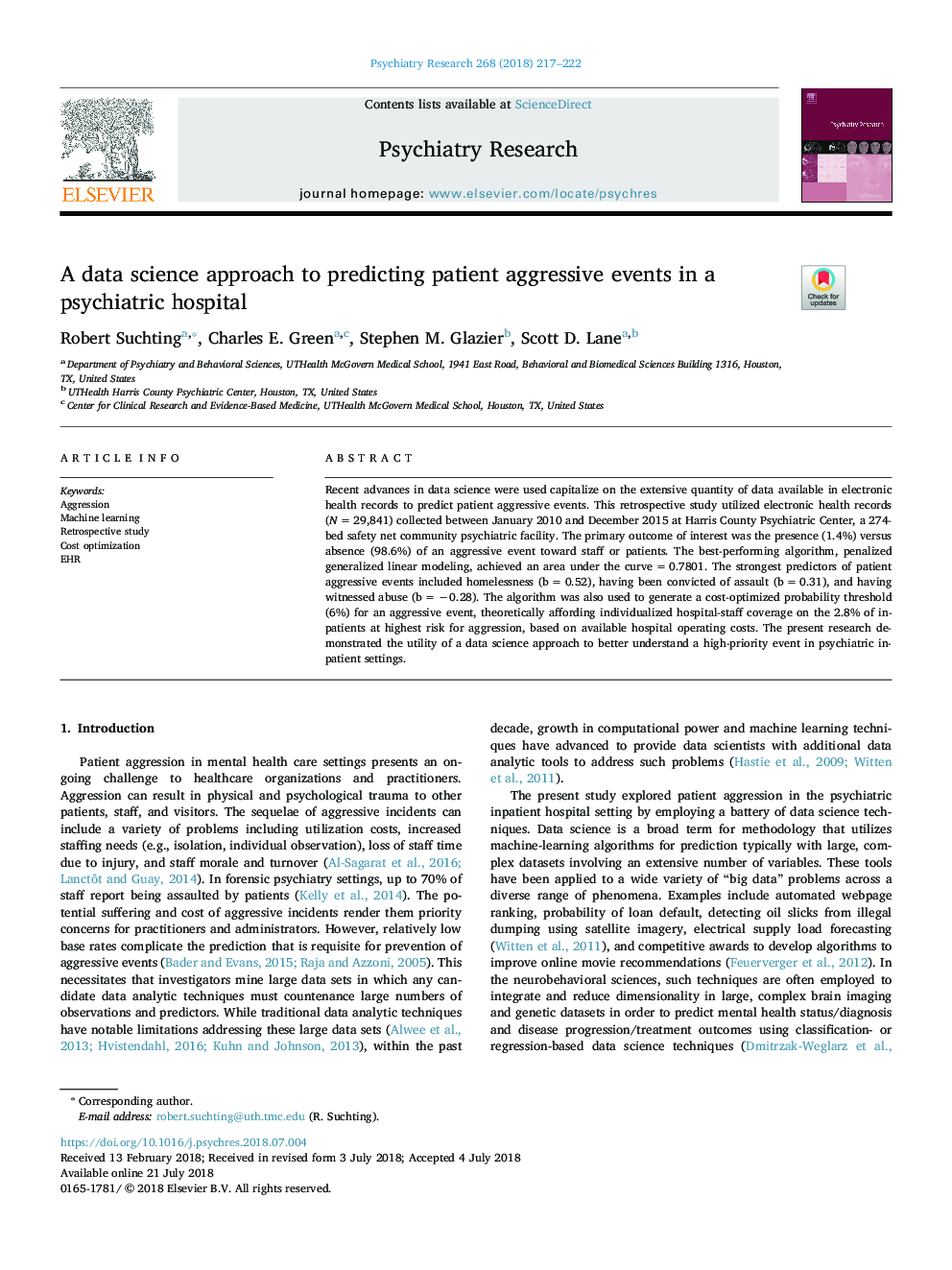| Article ID | Journal | Published Year | Pages | File Type |
|---|---|---|---|---|
| 6811168 | Psychiatry Research | 2018 | 6 Pages |
Abstract
Recent advances in data science were used capitalize on the extensive quantity of data available in electronic health records to predict patient aggressive events. This retrospective study utilized electronic health records (Nâ¯=â¯29,841) collected between January 2010 and December 2015 at Harris County Psychiatric Center, a 274-bed safety net community psychiatric facility. The primary outcome of interest was the presence (1.4%) versus absence (98.6%) of an aggressive event toward staff or patients. The best-performing algorithm, penalized generalized linear modeling, achieved an area under the curveâ¯=â¯0.7801. The strongest predictors of patient aggressive events included homelessness (bâ¯=â¯0.52), having been convicted of assault (bâ¯=â¯0.31), and having witnessed abuse (bâ¯=â¯â0.28). The algorithm was also used to generate a cost-optimized probability threshold (6%) for an aggressive event, theoretically affording individualized hospital-staff coverage on the 2.8% of inpatients at highest risk for aggression, based on available hospital operating costs. The present research demonstrated the utility of a data science approach to better understand a high-priority event in psychiatric inpatient settings.
Related Topics
Life Sciences
Neuroscience
Biological Psychiatry
Authors
Robert Suchting, Charles E. Green, Stephen M. Glazier, Scott D. Lane,
